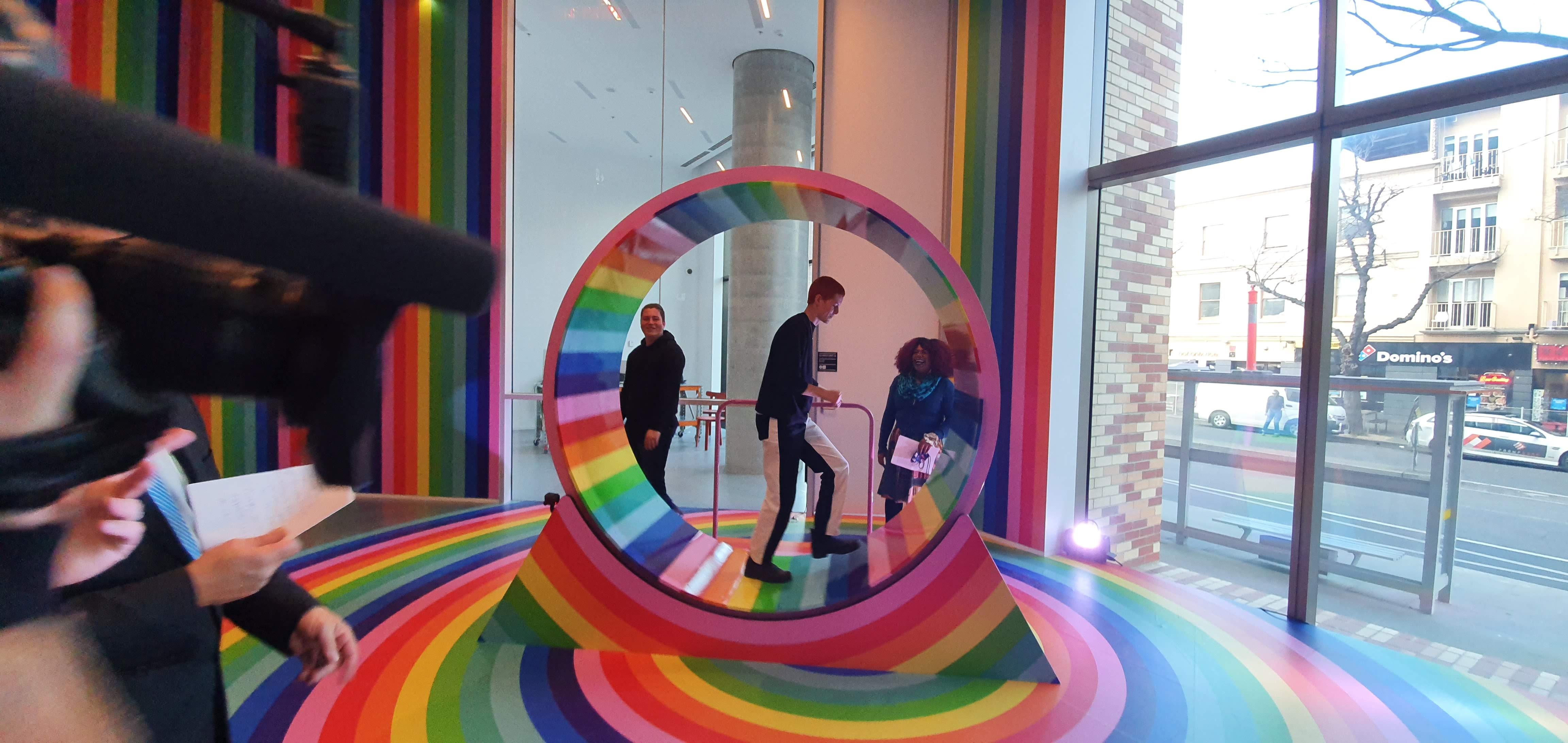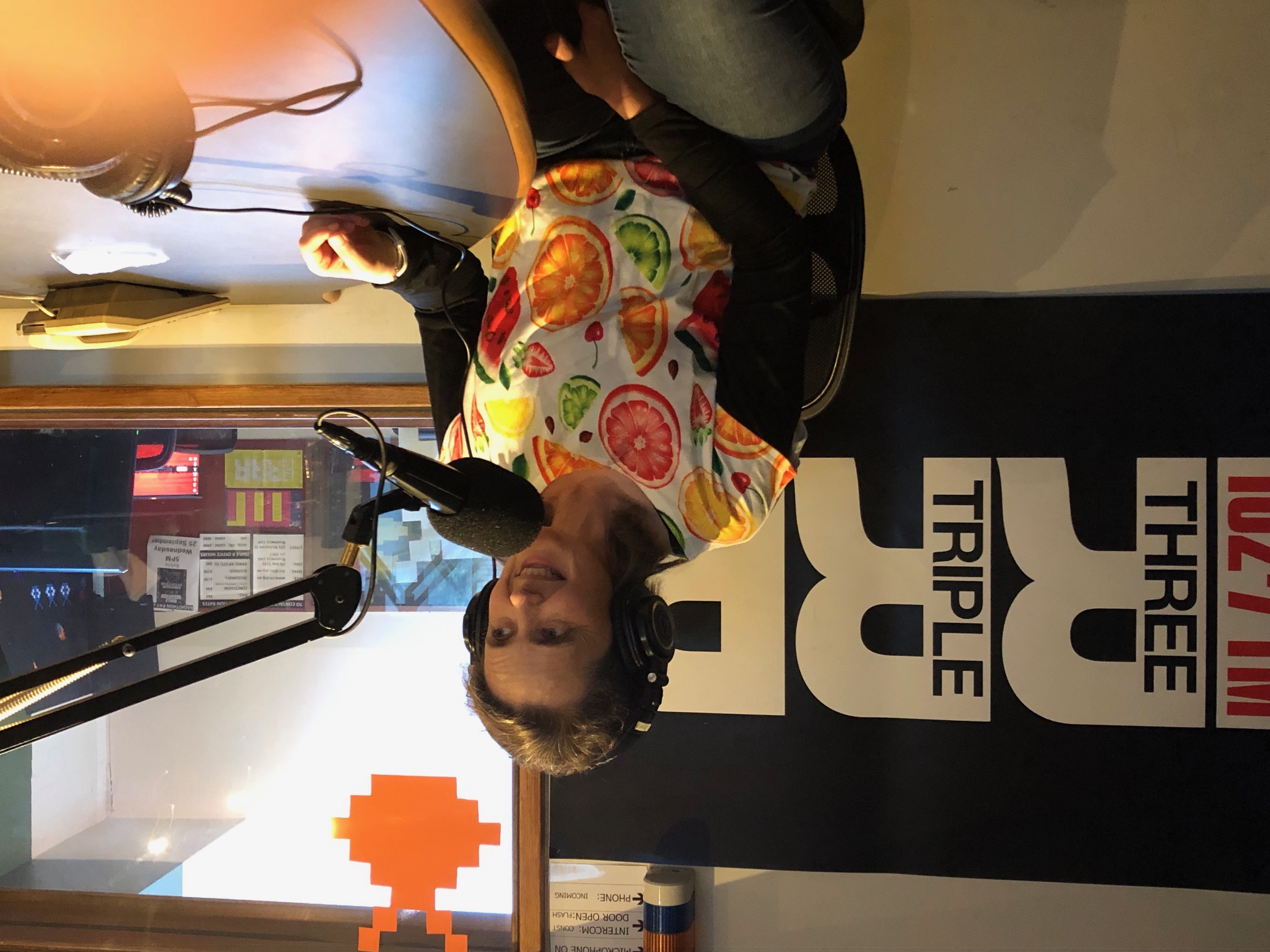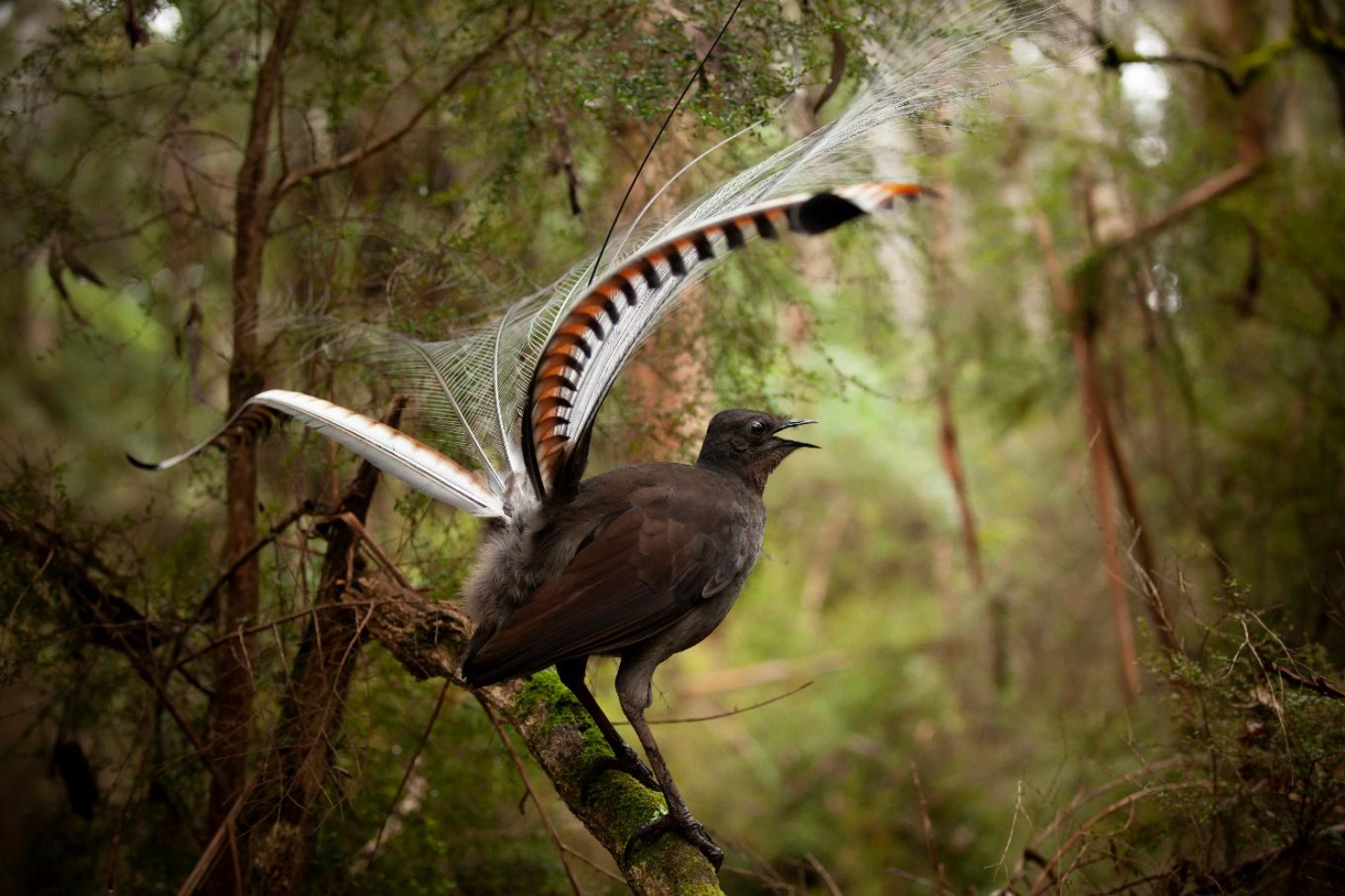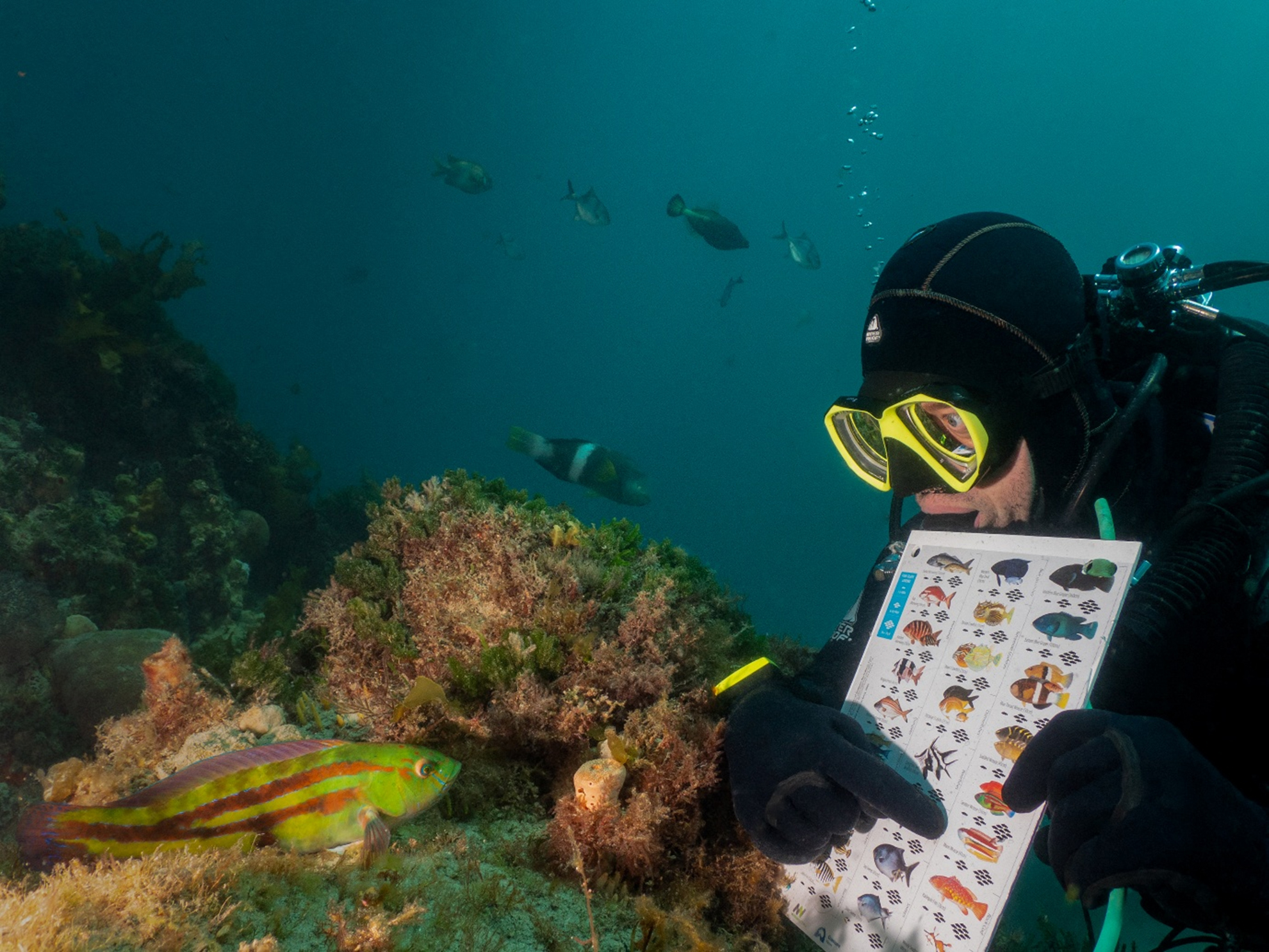The Therapeutic Odyssey of Psilocybin and MDMA: A Return to Roots
Science Victoria Edition

By Kade Huckstep, PhD Candidate in Addiction Neuroscience at The Florey Institute of Neuroscience and Mental Health
From ancient “magic” to modern medicine, psilocybin (the active ingredient in “magic mushrooms”) and MDMA (“ecstasy”) have had a riveting journey in healthcare. These drugs have gone from potential medicines to banned substances, and now – with Australia’s world-leading reclassification of both this year – back to promising medical treatments. This tale of rediscovery and redemption is not just about two drugs: it’s about an evolving understanding of mental healthcare and the reclamation of lost scientific knowledge.
A Historical Prelude

“Magic” psilocybin mushrooms have been used in spiritual practices, particularly in the Americas, for millennia. But American amateur mycologist Robert Gordon Wasson is credited with introducing them to the rest of the world in 1957 after participating in an Indigenous Mazatec ceremony in Mexico and describing his experience.1 Psilocybin subsequently caught the attention of many scientists, including Swiss chemist (and famed LSD-discoverer) Albert Hofmann, who used Psilocybe Mexicana mushroom samples to isolate and artificially synthesise psilocybin.2 This enabled more controlled drug dosing and launched a decade of research into potential medical applications for psilocybin.
Psilocybin was swept into the 1960s counterculture movement, which led to the 1970 United States Controlled Substances Act classifying it as “Schedule I”. As a Schedule I substance, it was considered to have high abuse potential, no accepted medical use, and a lack of accepted safety. It wasn’t long before other countries followed suit, with Australia soon classifying psilocybin as a Schedule 9 (our Schedule I equivalent) prohibited substance.
MDMA (3,4-methylenedioxymethamphetamine) was first synthesised in 1912 as an intermediate step in the synthesis of a drug to stop bleeding. The psychoactive properties of MDMA weren’t discovered until the mid-1970s, however, when chemist Alexander Shulgin synthesised and self-tested the compound.3 Upon experiencing the high brought on by MDMA, Shulgin realised the drug’s therapeutic potential and shared it with psychologist Leo Zeff in 1976. Zeff, impressed with MDMA’s ability to facilitate emotional insights, began using it in his practice with reportedly great safety and success.4
In the early 1980s, MDMA was referred to as “Empathy” by psychotherapists who used it for clinical and research purposes.5 However, the substance was rebranded “Ecstasy” and its recreational use flourished. In 1984, the US Drug Enforcement Administration noted an increase in MDMA confiscations and moved to classify it as an illegal substance. The clinical research community sought to contest this, but given the lack of structured clinical trial data, MDMA was categorised as a US Schedule I drug in 1985 and Australian Schedule 9 drug in 1986.
The strict regulation of both psilocybin and MDMA created a host of new bureaucratic hurdles for researchers, such as increased licensing requirements and reduced funding, effectively halting decades of potential therapeutic research and use.6
From Counterculture to Clinical Care
Despite the legal barriers, a handful of researchers and clinicians continued to advocate for psilocybin and MDMA’s potential clinical utility. The early 2000s saw a revival of research interest, and the establishment of various clinical trials investigating the use of these drugs in combination with psychotherapy.
Drug-assisted psychotherapy differs from conventional mental health drug treatments: these drugs are not intended to be taken daily, indefinitely, or unsupervised. Instead, patients receive several weeks of psychotherapy, during which time they receive 1-3 evenly spaced drug administrations. Both substances, though working differently, are thought to boost the impact of therapy and promote emotional breakthroughs. Unlike most antidepressant medications, which can take up to six weeks to begin working, these treatments start helping immediately.
Clinical Trial Triumphs
The modern era of psilocybin and MDMA research has been characterised by a cautious but enthusiastic exploration of their possibilities as treatments for a broad array of conditions.
The mood-boosting potential of psilocybin-assisted therapy has shown incredible promise for depression.7 A study of people with moderate-to-severe depression compared only two doses of psilocybin with a six-week course of daily escitalopram, a common antidepressant medication. Not only was psilocybin just as effective at reducing depression scores, but the proportion of patients who no longer qualified as depressed after treatment was twice as high after psilocybin-assisted therapy.8
Psilocybin has also been shown to reduce both immediate and long-term anxiety in patients with terminal conditions such as cancer or HIV. 9 In addition, studies found that the treatment reduces drinking in people with alcohol use disorder10 and smoking in nicotine-dependent smokers,11 and a phase 1 feasibility study published this year concluded it would be a safe option for anorexia nervosa.12
Results from studies exploring MDMA-assisted therapy have been similarly encouraging, with research for this compound primarily focused on anxiety-based conditions. There have been studies demonstrating MDMA's potential to lessen social anxiety in autistic adults,13 and psychological distress related to life-threatening illnesses.14
The most extensive exploration of MDMA-assisted therapy is undoubtedly for the treatment of PTSD. In addition to several small successful studies, a recent Phase III clinical trial people with moderate-to-severe PTSD found that following treatment, 71% of the people treated with MDMA no longer met the criteria for PTSD, compared to just 48% in the control group.15 This follows a previous trial with similar results, which also tracked participants’ alcohol use throughout the treatment, and found that the MDMA group drank less.16 This finding is particularly promising, as many people reportedly use alcohol to self-medicate their PTSD, and subsequently develop alcohol use disorders. MDMA-assisted therapy may therefore assist patients with alcohol use disorder, as it appears to help decrease alcohol use post-detox.17
A Regulatory Renaissance

Australia's recent decision to reschedule MDMA and psilocybin for therapeutic use represents a seismic shift in drug policy. The Therapeutic Goods Administration (TGA) has approved the prescription of these substances for specific psychiatric conditions, acknowledging their potential therapeutic benefits and enabling their use in a controlled medical context. Specifically, as of 1 July 2023, psilocybin-assisted therapy is approved for treatment-resistant depression and MDMA-assisted therapy is approved to treat PTSD. Both drugs were also reclassified as Schedule 8, marking a significant shift in their legal status from prohibited to medicinal - the first instance of a national government recognising the therapeutic potential of psychedelic substances and integrating them into the medical system.
While the US Food Drug Administration (FDA) is yet to follow suit, it has previously awarded both treatments “breakthrough therapy” status: a designation reserved for drugs that may offer substantial improvements over existing treatments, intended to speed up their development and review. It has also been reported that, given the success of the PTSD clinical trials, an application for FDA approval of MDMA is set to be filed by the end of the year.
Risks and Considerations
Despite the promising data, there remain several important considerations in the legalisation of these medications. It is important to keep in mind that the TGA’s decision was based on clinical trials which had very strict and numerous exclusion criteria. Conditions like PTSD and treatment-resistant depression frequently co-occur with other conditions, making it likely that many real-world patients won’t match the subjects studied.
The TGA has also been criticised for an apparent lack of consultation with Australian researchers and experts in this space, and some clinicians fear that the regulatory framework governing access to these drugs may be insufficient. Clear guidelines relating to the psychotherapy component of this treatment are also lacking, and questions have arisen around the logistical and financial feasibility of psychiatrists delivering this treatment.
The previously illicit status of these drugs has led to stigma, but public perception is changing, and rapidly. As a result, these medications now sit at an interesting juncture between stigma and hype, and it will be important to manage both sides as either could damage the success of this rollout.
While the therapeutic potential is undoubtedly immense, there are hurdles to overcome. Regulatory, ethical, and logistical questions remain. The narrative of these substances is still being written, and it will be the task of scientists, policymakers, and society at large to ensure the next chapters are approached with care and consideration.
A Hopeful Horizon
As Australia steps into the therapeutic potential of psychedelics, the path is marked with caution signs. The general sentiment is that while these treatments could revolutionise mental healthcare, the journey must be measured, evidence-based, and patient-centric.
The renaissance of these compounds in therapy is a testament to the resilience of scientific curiosity, and the relentless pursuit of better mental health treatments. While there remain hurdles to overcome and risks to be mitigated, these substances could herald a new era in psychiatry - one where some of the most challenging mental health conditions could be treated more effectively than ever before.
References:
1. Seeking the magic mushroom — Trippingly. (2021, March 31). Trippingly. trippingly.net/lsd/2018/5/14/seeking-the-magic-mushroom
2. Hofmann, A. (1959). Psychotomimetic drugs. Acta physiologica et pharmacologica Neerlandica, 8, 240-258.
3. Shulgin, A. T. (1964). 3-Methoxy-4 5-methylenedioxy Amphetamine, a New Psychotomimetic Agent. Nature, 201(4924), 1120-1121.
4. Stolaroff, M. J. (1997). The secret chief revealed: Conversations with a pioneer of the underground psychedelic therapy movement. Multidisciplinary Association for Psychedelic Studies (MAPS).
5. Sessa, B., et al. (2019). A review of 3, 4-methylenedioxymethamphetamine (MDMA)-assisted psychotherapy. Frontiers in psychiatry, 10, 138.
6. Nutt, D. J., et al. (2013). Effects of Schedule I drug laws on neuroscience research and treatment innovation. Nature Reviews Neuroscience, 14(8), 577-585.
7. Li, N. X., et al. (2022). Dose effect of psilocybin on primary and secondary depression: a preliminary systematic review and meta-analysis. Journal of Affective Disorders, 296, 26-34.
8. Carhart-Harris, R., et al. (2021). Trial of psilocybin versus escitalopram for depression. New England Journal of Medicine, 384(15), 1402-1411.
9. Grob, C. S., et al. (2011). Pilot study of psilocybin treatment for anxiety in patients with advanced-stage cancer. Archives of general psychiatry, 68(1), 71-78.
10. Bogenschutz, M. P., et al. (2022). Percentage of heavy drinking days following psilocybin-assisted psychotherapy vs placebo in the treatment of adult patients with alcohol use disorder: a randomized clinical trial. JAMA psychiatry, 79(10), 953-962.
11. Johnson, M. W., et al. (2017). Long-term follow-up of psilocybin-facilitated smoking cessation. The American journal of drug and alcohol abuse, 43(1), 55-60.
12. Peck, S. K., et al. (2023). Psilocybin therapy for females with anorexia nervosa: a phase 1, open-label feasibility study. Nature Medicine, 29(8), 1947-1953.
13. Danforth, A. L., et al. (2018). Reduction in social anxiety after MDMA-assisted psychotherapy with autistic adults: a randomized, double-blind, placebo-controlled pilot study. Psychopharmacology, 235(11), 3137-3148.
14. Wolfson, P. E., et al. (2020). MDMA-assisted psychotherapy for treatment of anxiety and other psychological distress related to life-threatening illnesses: a randomized pilot study. Scientific reports, 10(1), 20442.
15. Mitchell, J. M., et al. (2023). MDMA-assisted therapy for severe PTSD: a randomized, double-blind, placebo-controlled phase 3 study. Focus, 21(3), 315-328.
16. Nicholas, C. R., et al. (2022). The effects of MDMA-assisted therapy on alcohol and substance use in a phase 3 trial for treatment of severe PTSD. Drug and alcohol dependence, 233, 109356.
17. Sessa, B., et al. (2021). First study of safety and tolerability of 3, 4-methylenedioxymethamphetamine-assisted psychotherapy in patients with alcohol use disorder. Journal of Psychopharmacology, 35(4), 375-383.
Discover how you can join the society
Join The Royal Society of Victoria. From expert panels to unique events, we're your go-to for scientific engagement. Let's create something amazing.




















